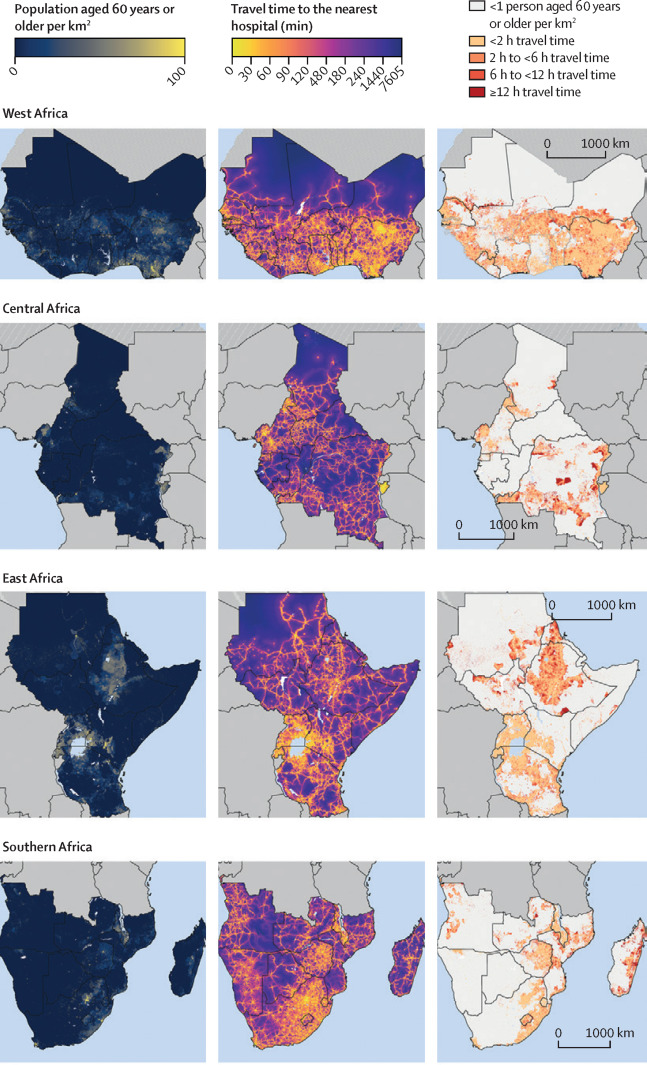New paper published on healthcare access in Sub-Saharan Africa
It is almost a year since SARS-CoV-2 first emerged in China. The virus spread all over the world. Countries south of the Sahara did not receive much attention. Although outbreaks here have a strong risk potential due to existing crises. In our new published paper we modeled travel-time towards hospitals for adults aged 60 and older. Check it out in The Lancet Healthy Longevity’s first issue:
Geldsetzer, P.; Reinmuth, M.; Ouma, P. O., Lautenbach, S.; Okiro E. A.; Bärnighausen, T.; Zipf, A. Mapping physical access to health care for older adults in sub-Saharan Africa and implications for the COVID-19 response: a cross-sectional analysis. The Lancet Healthy Longevity. 2020;1(1):e32-e42.
What is the study about?
Travel-time based catchment area estimation is a method public health officials and policy makers can base their decisions on in planning permanent as well as makeshift health care service locations. Areas with short distances to healthcare services are considered to be well supplied with healthcare. In contrast, areas with longer distances to health services are considered poorly supplied. Low physical access to health care in Sub-Saharan Africa will probably be a major barrier to receiving care for adults aged 60 years and older with COVID-19.
For an analysis like this three major datasets are needed:
- Healthcare service provision locations like hospitals, clinics and health centers
- Distribution of Population
- A travel model to provide information on the mobility of populations
By combining data from OpenStreetMap and published Master facility list we created a new dataset on healthcare facilities in Sub-Sahara Africa. For population distribution we relied on WorldPop products. The travel model used to estimate the travel times is part of AccessMod.

Our results show that almost 10% of adults aged 60 years or older have an estimated travel time to the nearest hospital of 6 hours or longer. Most countries in Sub-Sahara Africa contained populated areas in which adults aged 60 years and older had a travel time to the nearest hospital of 12 h or longer and to the nearest healthcare facility of any type of 6 h or longer.
Future work
We are currently working on improvements on the healthcare provision locations layer and the travel model. This includes an accurate assessment of the quality of healthcare facilities, as well as the travel model underlying data such as the road network. It is important to determine which areas may be over- or underestimated in their healthcare capacity and account for specific needs of care. Our travel model depicts a best case scenario of mobility at a resolution of 1km x 1km. We are working on improvements and adding other approaches on travel time estimations like the openrouteservice ORS isochrone service.
Related work
- Exploring OSM for healthcare acccess analysis in Sub-Saharan Africa
- Analysing OSM Completeness of health facilities in Sub-Sahara Africa in ohsomeHeX
- Exploring OSM history: the example of health related amenities
- Tools for Disaster Risk Reduction by HeiGIT – Celebrating the International Day for Disaster Risk Reduction


